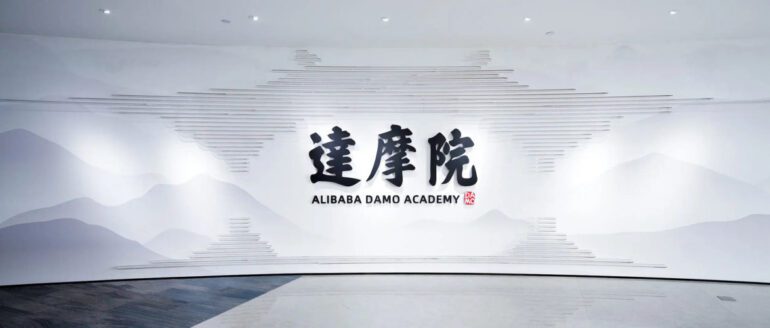TL;DR:
- Alibaba DAMO Academy introduces SeaLLMs, a large language model designed for Southeast Asia.
- These models offer support for local languages, cultural nuances, and legal frameworks in the region.
- SeaLLM-chat adapts to market-specific customs, making it a valuable tool for businesses in Southeast Asia.
- SeaLLMs are open-source on Hugging Face and available for research and commercial use.
- The models are praised for their potential to democratize AI and benefit communities beyond English and Chinese speakers.
- Efficient processing for non-Latin languages results in cost savings and environmental benefits.
- SeaLLM-13B outperforms other models in linguistic, knowledge-related, and safety tasks.
- In the FLORES benchmark, SeaLLMs excel in machine translation, especially for low-resource languages.
Main AI News:
Alibaba DAMO Academy is proud to introduce SeaLLMs, a groundbreaking series of large language models (LLM) featuring 13-billion-parameter and 7-billion-parameter versions. These LLMs are tailored to embrace the rich linguistic diversity of Southeast Asia, marking a significant technological advancement in inclusivity.
These models are strategically engineered to provide unparalleled support for local languages across the region, encompassing Vietnamese, Indonesian, Thai, Malay, Khmer, Lao, Tagalog, and Burmese. Of particular note is SeaLLM-chat, a conversational model that demonstrates exceptional adaptability to the unique cultural nuances of each market. It seamlessly aligns with local customs, styles, and legal frameworks, making it an indispensable chatbot assistant for businesses venturing into Southeast Asian markets.
SeaLLMs are now available as open-source models on Hugging Face, complete with a released checkpoint for both research and commercial utilization.
Lidong Bing, Director of the Language Technology Lab at Alibaba DAMO Academy, expressed his enthusiasm, saying, “In our ongoing mission to bridge the technological gap, we are delighted to introduce SeaLLMs. These AI models not only comprehend local languages but also celebrate the cultural richness of Southeast Asia. This innovation accelerates the democratization of AI, empowering communities historically underrepresented in the digital realm.”
Echoing this sentiment, Luu Anh Tuan, Assistant Professor at Nanyang Technological University’s School of Computer Science and Engineering, a longstanding partner of Alibaba in multi-language AI research, praised the initiative, stating, “Alibaba’s strides in creating a multi-lingual LLM are impressive. This endeavor has the potential to unlock new opportunities for millions who speak languages beyond English and Chinese. Alibaba’s commitment to inclusive technology reaches a milestone with SeaLLMs’ launch.”
SeaLLM-base models underwent rigorous pre-training on a diverse, high-quality dataset that encompasses SEA languages, ensuring a nuanced understanding of local contexts and native communication styles. This foundational work serves as the basis for chat models and SeaLLM-chat models, which benefit from advanced fine-tuning techniques and a meticulously curated multilingual dataset. As a result, chatbot assistants built on these models not only comprehend but also respect and accurately reflect the cultural intricacies of these languages, including social norms, customs, stylistic preferences, and legal considerations.
A noteworthy technical advantage of SeaLLMs lies in their efficiency, particularly when dealing with non-Latin languages. They can process text up to nine times longer (or fewer tokens for the same text length) than other models like ChatGPT for non-Latin languages such as Burmese, Khmer, Lao, and Thai. This translates to enhanced capabilities for handling complex tasks, reduced operational and computational costs, and a lower environmental footprint.
Furthermore, SeaLLM-13B, boasting 13 billion parameters, outperforms comparable open-source models across a wide spectrum of linguistic, knowledge-related, and safety tasks, setting a new standard for performance. When evaluated against the M3Exam benchmark, SeaLLMs showcase a profound understanding of subjects ranging from science, chemistry, physics to economics, all in SEA languages, surpassing their contemporaries.
In the FLORES benchmark, which evaluates machine translation capabilities between English and low-resource languages, SeaLLMs excel. They outshine existing models in these low-resource languages and deliver performances on par with state-of-the-art (SOTA) models in most high-resource languages, such as Vietnamese and Indonesian.
Conclusion:
Alibaba’s SeaLLMs represent a significant advancement in AI language models specifically tailored for Southeast Asia. These models have the potential to revolutionize the market by enabling businesses to engage more effectively with diverse linguistic and cultural communities in the region. With their efficiency and superior performance, SeaLLMs are poised to drive innovation and inclusivity in the Southeast Asian market.

